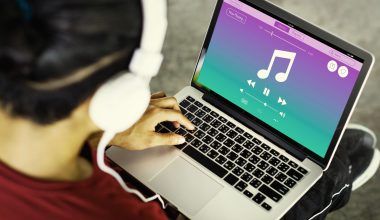The Spotify algorithm is a powerful tool that helps artists reach their audience and enables listeners to discover new music tailored to their tastes. Understanding how this algorithm works can significantly impact your success as a musician. This blog will delve deep into the intricacies of the algorithm, how it functions, and how you can leverage it to boost your music career.
What is the Spotify Algorithm?
The algorithm is a complex set of rules and processes that Spotify uses to recommend music to its users. It analyzes listening habits, preferences, and various other factors to curate personalized playlists and suggestions. By understanding the algorithm, artists can optimize their music’s visibility on the platform.
How Does the Spotify Algorithm Work?
The algorithm primarily relies on three main components: Collaborative Filtering, Natural Language Processing (NLP), and Audio Analysis.
- Collaborative Filtering Collaborative filtering is based on the listening behavior of users. It looks at patterns and similarities in music preferences among users. If User A likes a certain song and User B has similar tastes, the algorithm will recommend User A’s favorite tracks to User B.
- Natural Language Processing (NLP) NLP involves analyzing text data from various sources like blogs, articles, and social media. The algorithm uses this information to understand the context and popularity of songs. It processes keywords and descriptions associated with tracks to enhance recommendations.
- Audio Analysis Spotify’s audio analysis examines the actual sound of the music. It looks at elements like tempo, key, and loudness. The algorithm can classify songs into different categories, ensuring recommendations match a user’s preferred sound profile.
Importance of Understanding the Spotify Algorithm
For artists, understanding the algorithm is crucial. It can make the difference between your music being discovered by a broad audience or getting lost in the vast sea of tracks available on the platform. By aligning your release strategy with how the algorithm works, you can maximize your chances of success.
How to Optimize Your Music for the Spotify Algorithm
- High-Quality Audio Ensure your tracks are of the highest audio quality. The algorithm favors professionally produced music that meets industry standards. High-quality audio helps retain listeners, reducing the skip rate, and positively impacting your track’s ranking.
- Engage with Your Audience Interaction with your listeners can positively influence the algorithm. Encourage them to follow your profile, add your songs to their playlists, and share your music. Active engagement can lead to more streams and saves, signaling to the algorithm that your music is popular and worth promoting.
- Consistent Releases Regularly releasing new music keeps you on the radar of the algorithm. Consistency helps maintain and grow your listener base. Plan your releases strategically to keep your audience engaged and excited about your new work.
- Metadata and Keywords Accurate metadata and the strategic use of keywords are essential. Include relevant information about your tracks and use keywords that align with what listeners might search for. This helps the algorithm accurately categorize your music and recommend it to the right audience.
- Promote on Social Media Social media engagement can drive traffic to your Spotify profile. More traffic and interactions signal the algorithm to boost your music. Use platforms like Instagram, Twitter, and TikTok to promote your music and interact with your fans.
The Role of Playlists in the Spotify Algorithm
Playlists play a significant role in the algorithm. Getting your song featured in popular playlists can dramatically increase your visibility. Here are some tips to get your music playlisted:
- Submit to Spotify’s Editorial Playlists Use Spotify for Artists to submit your tracks for playlist consideration. Provide detailed information about your song to increase the chances of being selected. Highlight any promotional plans or interesting facts about the track that might catch the editor’s attention.
- Target User-Curated Playlists Reach out to users who create influential playlists. Personal connections and a good pitch can help get your song included. Look for playlists that match your music style and audience, and build relationships with curators.
- Create Your Own Playlists Curate playlists that include your tracks. Share them with your audience to boost engagement and streams. This not only helps promote your music but also provides a platform to showcase your musical influences and taste.
The Impact of Streaming Metrics on the Spotify Algorithm
The algorithm pays close attention to streaming metrics such as play count, skip rate, and save rate. Here’s how each metric affects your song’s performance:
- Play Count The number of times your song is played is a direct indicator of its popularity. A high play count signals the algorithm to recommend your track to more users. Encourage your fans to play your songs repeatedly and share them with their friends.
- Skip Rate If listeners frequently skip your song, it negatively impacts your ranking in the algorithm. Ensure your music is engaging right from the start to keep skip rates low. A compelling intro and catchy melodies can help retain listeners.
- Save Rate When users save your song to their library, it shows a strong preference, prompting the algorithm to boost its visibility. Encourage your fans to save your tracks by reminding them in your social media posts and during live performances.
Tips for New Artists to Crack the Spotify Algorithm
For new artists, breaking through the algorithm can seem daunting. Here are some actionable tips to help you get started:
- Leverage Social Media Use platforms like Instagram, TikTok, and Twitter to promote your music. High engagement on social media can translate into better performance on Spotify. Create engaging content that resonates with your audience and encourages them to check out your music on Spotify.
- Network with Other Artists Collaborate with other artists to tap into their listener base. Joint projects can help you gain more exposure. Collaborations also introduce you to new audiences who might not have discovered your music otherwise.
- Focus on Your Niche Identify and target a specific niche. The algorithm rewards artists who cater to a particular audience with high engagement. Understand your target audience’s preferences and create music that appeals to them.
- Utilize Spotify for Artists Take advantage of the tools and insights available on Spotify for Artists. Monitor your performance and adjust your strategy accordingly. Use the data provided to understand your audience better and tailor your marketing efforts.
- Optimize Your Profile Ensure your Spotify profile is complete and visually appealing. Include a compelling bio, high-quality images, and links to your social media profiles. A well-maintained profile can attract more followers and increase your credibility.
The Future of the Spotify Algorithm
The algorithm continues to evolve with advancements in technology and changes in user behavior. Future updates may include more personalized recommendations, better integration with social media trends, and enhanced audio analysis capabilities. Staying informed about these changes will help artists remain competitive and make the most of the platform.
Advanced Strategies for Leveraging the Spotify Algorithm
- Data-Driven Decisions Use the analytics provided by Spotify for Artists to make informed decisions. Track which songs are performing well and which are not, and use this data to guide your future releases and promotional efforts.
- Invest in High-Quality Visuals Eye-catching album art and engaging video content can attract more listeners. The algorithm also takes into account the visual appeal of your profile and tracks, so investing in professional visuals can enhance your overall presence.
- Engage with Spotify Communities Participate in Spotify forums and communities to connect with other artists and listeners. Sharing insights and learning from others can provide valuable tips and increase your visibility within the Spotify ecosystem.
- Leverage Spotify Ads Consider investing in Spotify Ads to promote your music. Targeted ads can reach specific demographics and boost your play count, influencing the algorithm to favor your tracks.
- Collaborate with Influencers Partner with influencers who can promote your music to their followers. Influencer endorsements can lead to increased streams and engagement, positively impacting the algorithm.
Conclusion
Understanding and leveraging the algorithm is essential for any artist looking to succeed on the platform. By focusing on high-quality content, engaging with your audience, and utilizing the tools available, you can improve your music’s visibility and reach. Keep up with trends and continuously adapt your strategy to stay ahead in the ever-evolving music industry.
Summary of Key Points
- The algorithm is crucial for music recommendations and visibility.
- It uses collaborative filtering, natural language processing, and audio analysis.
- Optimize your music by maintaining high quality, engaging with listeners, and consistent releases.
- Playlists and streaming metrics significantly impact the algorithm.
- New artists should leverage social media, network, and use Spotify for Artists tools.
- Stay updated with future developments in the algorithm.
By understanding how the algorithm works, you can take proactive steps to ensure your music gets the attention it deserves. Stay consistent, engage with your fans, and keep optimizing your strategy to thrive on Spotify.
For further reading, explore these related articles:
- Top 10 albums and artist of Spotify this Year
- How will AI change the future of the music industry?
- Top Music Streaming Apps in India
For additional resources on music marketing and distribution, visit Deliver My Tune.






